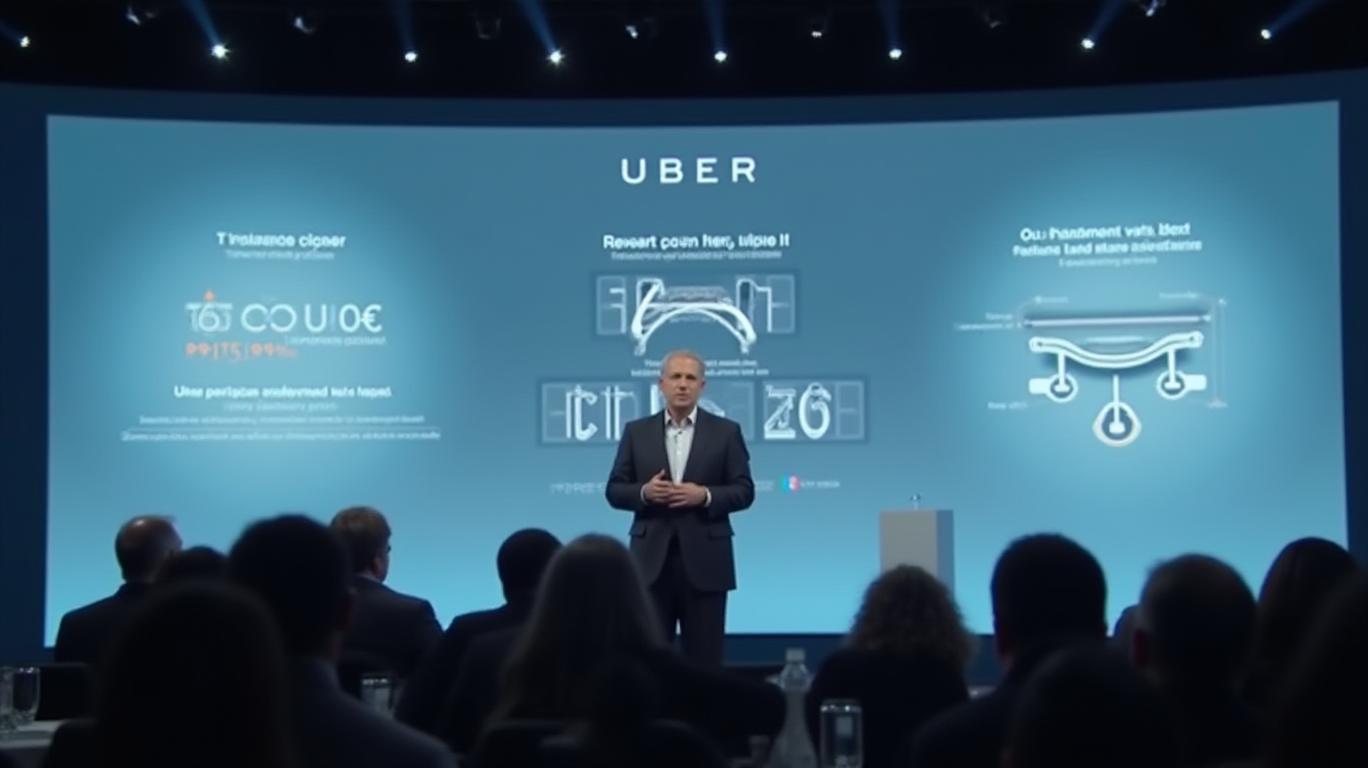Uber's Q1 Earnings: A Triumph of Progress Amid Persistent Headwinds
In the ever-evolving landscape of ride-hailing and delivery services, Uber’s Q1 2025 earnings report offered a paradoxical mix of triumph and turbulence. While the company demonstrated resilience in user growth, profitability, and autonomous vehicle (AV) advancements, its stock dipped 5% post-announcement—a reaction to lingering financial and operational challenges. Let’s dissect the drivers behind this volatility and assess whether the long-term narrative remains intact.
Ask Aime: What's behind Uber's stock dip after Q1 2025 earnings?

The Numbers: Growth, Gaps, and Glimmers
Uber’s Q1 results were a masterclass in balancing scale with profitability. Revenue hit $11.53 billion, a 14% year-over-year increase, but fell short of the $11.62 billion analysts anticipated. This minor miss, however, was overshadowed by a stunning turnaround in profitability: EPS surged to $0.83 (from a $0.32 loss in Q1 2024), and net income soared to $1.78 billion. Meanwhile, adjusted EBITDA hit a record $1.9 billion, up 35% YoY, fueled by margin improvements in the delivery segment.
The company’s core metrics were equally robust. Monthly active platform consumers (MAPCs) rose 14% YoY to 170 million, aligning with expectations, while total trips jumped 18% to 3.04 billion. Gross bookings for mobility and delivery hit $42.82 billion, nearly matching forecasts. These figures underscore Uber’s ability to sustain demand across its global markets.
The Headwinds: Where the Storm Lies
Despite these positives, three key issues clouded the outlook:
1. The Freight Dilemma: Uber Freight, once a growth engine, reported a 1.9% YoY revenue decline to $1.26 billion—a stark reversal from its earlier momentum. This segment now faces overcapacity, pricing pressures, and logistical inefficiencies, casting doubt on its ability to recover.
2. Competitive Intensity: Uber’s global dominance is under siege. In the U.S., Lyft is clawing back market share, while Europe’s Bolt and Latin America’s DiDi continue to erode margins. The rise of alternative delivery platforms (e.g., DoorDash, Glovo) further complicates the battleground.
3. Rising Costs: U.S. insurance expenses for ride-hailing drivers spiked due to “legal system abuse”—a euphemism for fraudulent claims and accidents. This issue, unique to the U.S., threatens to offset gains from international markets with more stable cost structures.
The Zacks Investment Research’s “Hold” rating (Zacks Rank #3) encapsulates this cautious outlook. While Uber’s stock rose 31.9% over the prior month, the rating reflects skepticism about near-term execution risks.
The Silver Linings: AVs and Strategic Gambits
Amid the gloom, Uber’s investments in autonomous vehicles and strategic partnerships shine as catalysts for long-term value. The company’s Waymo partnership in Austin, for instance, achieved an annualized run-rate of 1.5 million AV trips—exceeding expectations—with Waymo’s 100 vehicles outperforming 99% of human drivers in utilization. This success hints at a future where AVs could slash operational costs and redefine ride-hailing economics.
Ask Aime: **"Is Uber's stock going to rebound after dipping 5%?"**
Additionally, Uber’s acquisitions (e.g., Turkey’s Trendyol Go) and partnerships (e.g., Delta SkyMiles, Open Table) are expanding its ecosystem into adjacent markets. These moves aim to reduce reliance on volatile segments like freight while capitalizing on underpenetrated geographies.
The Road Ahead: Balancing Act or Breakthrough?
Uber’s Q2 guidance offers a glimpse of ambition. The company forecasts 14% YoY MAPC growth and 18% trip growth, with gross bookings targeting $45.75–47.25 billion and EBITDA between $2.02–2.12 billion. Executives are pinning hopes on seasonal demand (summer travel, holiday delivery spikes) and the scaling of profitable delivery and AV services.
However, the freight segment’s struggles and rising U.S. insurance costs remain open wounds. Investors will scrutinize whether Uber can stabilize these areas without sacrificing growth in higher-margin businesses. The company’s cash reserves ($10.3 billion) provide a cushion, but sustained underperformance in key markets could test its financial flexibility.
Conclusion: A Story of Resilience, but Not Yet Redemption
Uber’s Q1 results are a testament to its operational resilience. User growth, delivery profitability, and AV progress paint a picture of a company evolving beyond its ride-hailing origins. Yet the stock’s decline underscores lingering concerns: execution gaps in revenue forecasting, the freight segment’s stagnation, and the specter of relentless competition.
The critical question remains: Can Uber convert its structural advantages into consistent outperformance? Its autonomous vehicle partnerships and global expansion bets suggest a path forward, but the freight turnaround and cost management in the U.S. are non-negotiable. For now, the stock’s 5% dip reflects skepticism about near-term hurdles—a sentiment investors should weigh against the company’s long-term vision.
In the words of the earnings call: “We’re not just navigating today’s challenges—we’re building the infrastructure for tomorrow’s transportation ecosystem.” Whether that vision translates into sustained growth, or merely a fleeting hope, will be decided in the quarters ahead.

_b905d9341749265671656.jpg)








